Jade plants, with their thick, woody stems and oval-shaped leaves, have graced many homes with their lush, green presence.
As a gardening enthusiast and blogger, I’ve always found jade plants to be a rewarding addition to any indoor garden.
Not only do they add a touch of nature’s serenity to your living space, but they are also fairly easy to care for, making them perfect for both novice and experienced plant lovers.
Benefits of Growing a Jade Plant
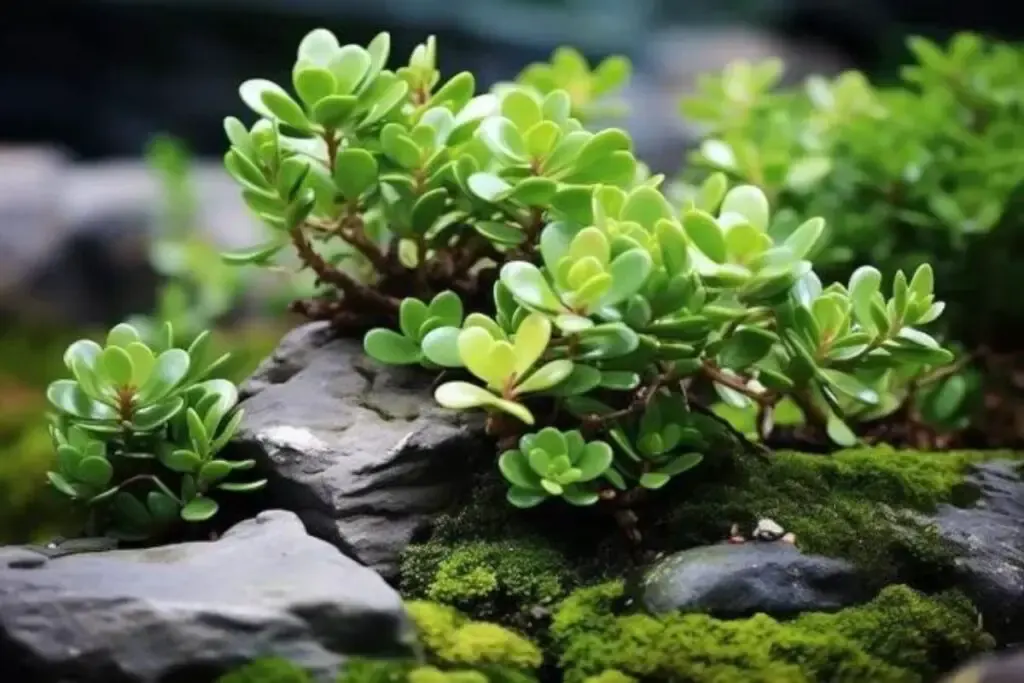
1. Easy to Care For
One of the most compelling reasons to grow a jade plant is its low-maintenance nature. These hardy succulents require minimal watering and can thrive in a variety of light conditions.
This makes them ideal for busy individuals or those who are new to the world of indoor gardening.
2. Long Lifespan and Symbolism
Jade plants can live for many years, often being passed down through generations. They are also considered symbols of good luck and prosperity in many cultures, making them a meaningful gift or a cherished addition to your home.
3. Air Purifying Qualities
Like many houseplants, jade plants contribute to a healthier indoor environment. They help purify the air by absorbing toxins such as toluene and benzene.
This makes them not just aesthetically pleasing, but also beneficial for your indoor air quality.
My Favorite Jade Plant Varieties
Each of these varieties brings its unique charm to the table, and I find that experimenting with different types can be a delightful aspect of growing jade plants.
Whether you prefer the classic green look or something a bit more eye-catching, there’s a jade plant variety that’s sure to capture your heart.
1. Crassula ovata ‘Hummel’s Sunset’
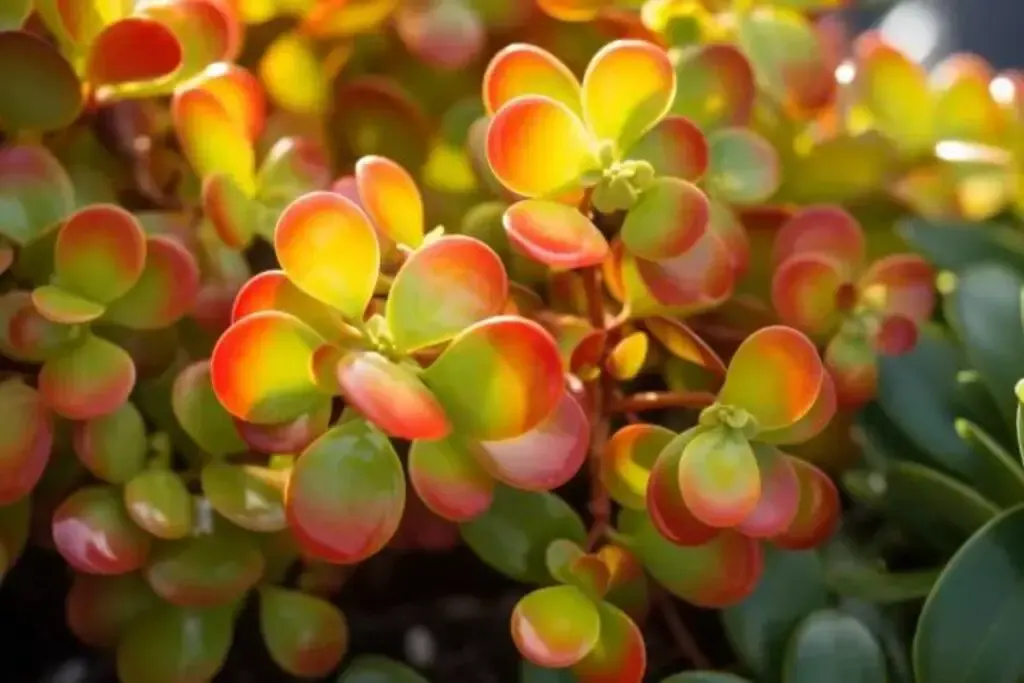
This variety is particularly striking with its golden-yellow leaves that turn red at the edges when exposed to sunlight. It’s a fantastic choice if you’re looking to add a splash of color to your indoor garden.
2. Crassula ovata ‘Compacta’
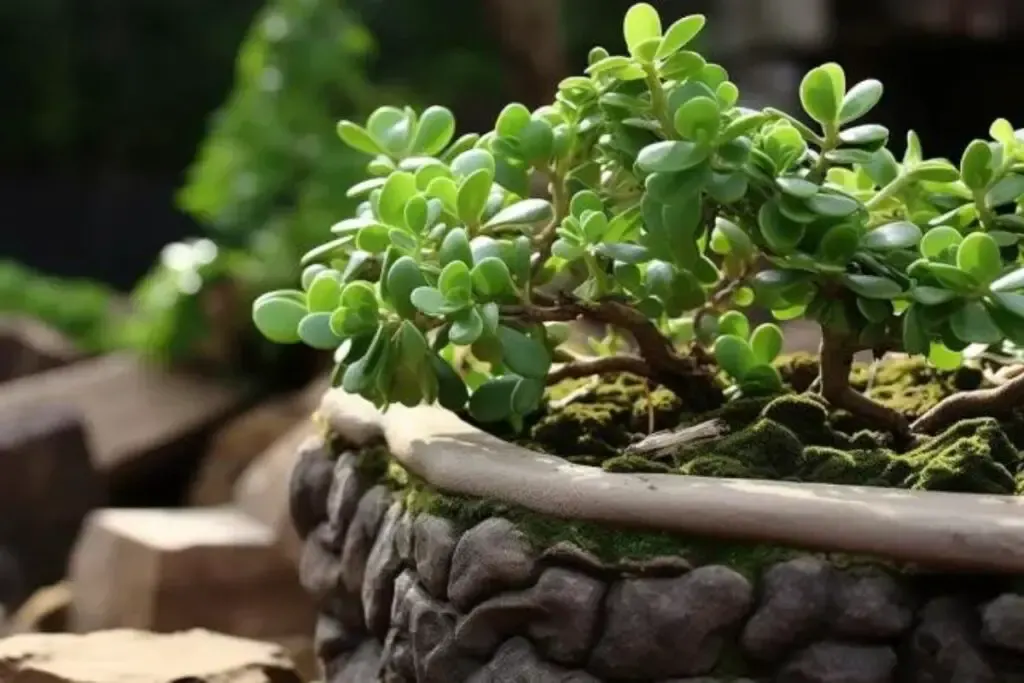
Often referred to as the ‘Miniature Jade’, this variety is perfect for those who love the classic jade plant look but have limited space. Its compact size makes it ideal for small apartments or as a desk plant.
3. Crassula Arborescens ‘Blue Bird’
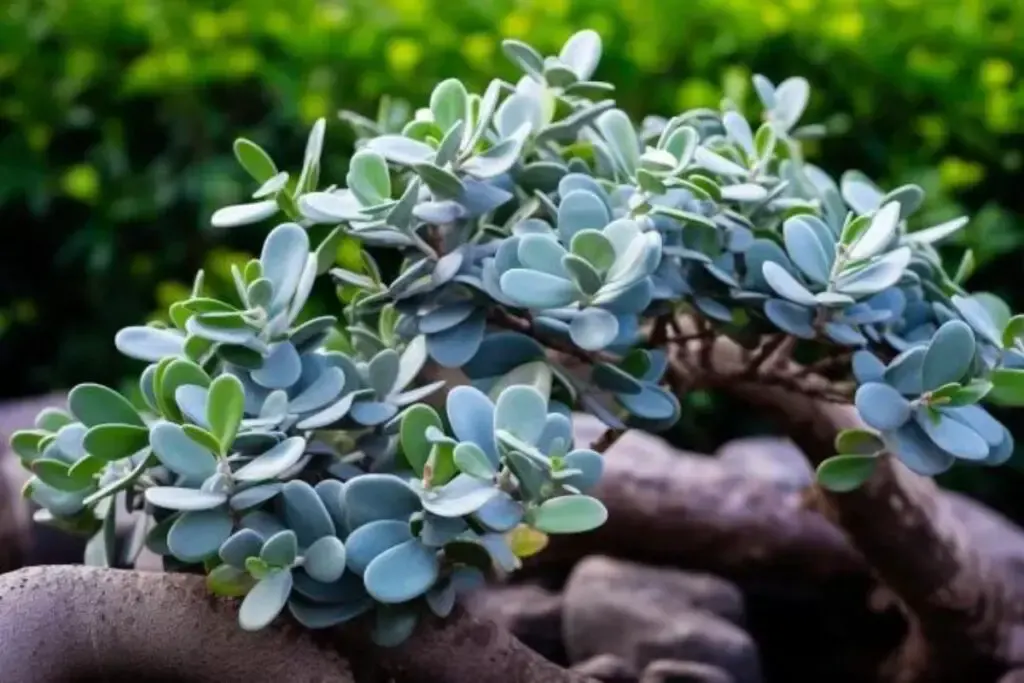
The ‘Blue Bird’ variety stands out with its silvery-blue leaves and reddish margins. It’s a less common variety, but its distinctive color palette makes it a must-have for collectors and enthusiasts alike.
Jade Plant Care
Caring for a jade plant is a delightful journey in gardening, one filled with rewarding growth and minimal fuss.
These resilient succulents are known for their adaptability and can thrive under various conditions, making them an ideal choice for both seasoned gardeners and those just starting their plant parenting journey.
Let’s dive into the specifics of how to nurture these charming plants to ensure they flourish in your care.
Planting
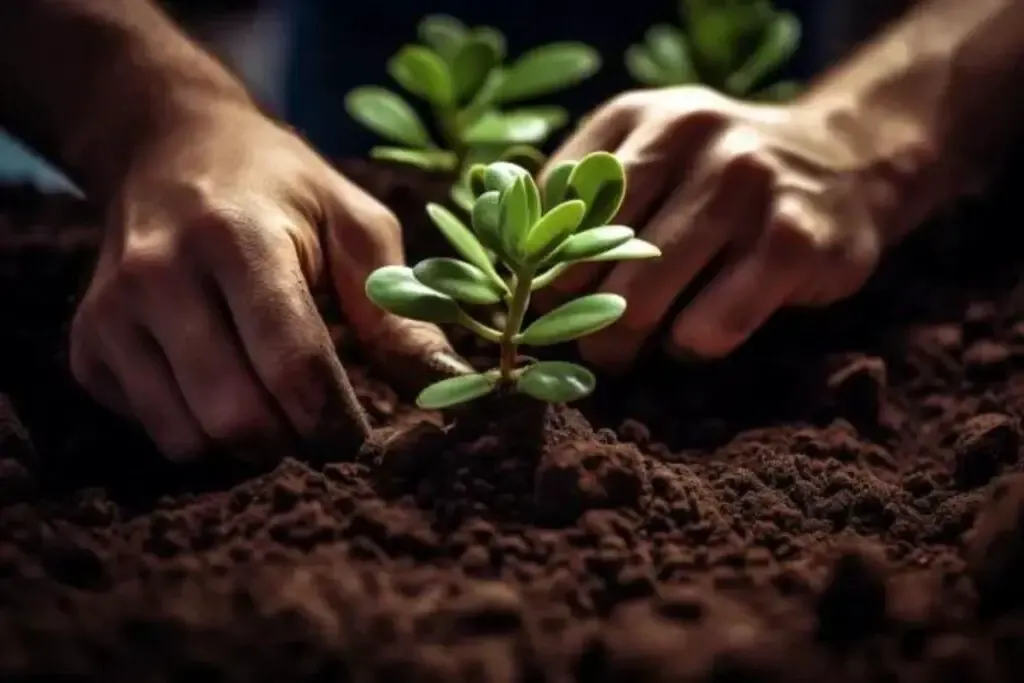
When planting your jade plant, choose a pot with good drainage and a size that comfortably accommodates the plant’s root ball.
This is crucial, as jade plants are susceptible to root rot if left in standing water. Ensuring proper drainage from the beginning sets the stage for a healthy and thriving plant.
Light
Jade plants love light, and they thrive best in bright, indirect sunlight. A spot near a south-facing window where they can bask in the sun’s rays for at least four to six hours a day is ideal.
Be cautious with intense direct sunlight, though, as it can sometimes scorch their leaves.
Soil
Well-draining soil is essential for jade plants. A succulent or cactus mix, readily available at garden centers, is perfect.
These mixes usually contain a blend of soil, sand, and perlite or pumice, which helps in preventing water retention and thus protects the plant from root rot.
Water
Watering is a crucial aspect of jade plant care. Let the soil dry out completely between waterings. When you do water, do it thoroughly, allowing excess water to drain out of the pot.
Overwatering is a common mistake, so it’s better to err on the side of too dry than too wet.
Temperature and Humidity
Jade plants prefer room temperatures between 65-75°F (18-24°C) and can tolerate a drop to 55°F (13°C) at night.
They aren’t too fussy about humidity and can adapt to the typical dryness of most homes. However, they should be protected from extreme cold and drafts.
Fertilizer
Fertilizing your jade plant isn’t necessary, but it can give them a boost. Use a balanced, water-soluble fertilizer diluted to half strength, and feed your plant every three to four months during the growing season (spring and summer). Avoid fertilizing in the winter when the plant is dormant.
Pruning
Pruning your jade plant not only keeps it looking tidy but also encourages healthier growth and shape. Here are four key points to keep in mind when pruning:
- Timing: The best time to prune is in the spring or early summer when the plant is in its active growth phase.
- Tools: Use sharp, clean pruning shears or scissors to make clean cuts without damaging the plant.
- Technique: Trim back leggy stems, remove any dead or damaged leaves, and shape the plant to your liking.
- Moderation: Be careful not to over-prune; removing too much at once can stress the plant.
Pruning is a simple yet effective way to enhance the beauty and health of your jade plant. It’s like giving your plant a refreshing haircut, encouraging it to grow back fuller and more vibrant.
Propagating
Propagating a jade plant is a rewarding and straightforward process. You can easily create new plants from leaf or stem cuttings. Here’s a quick guide:
- Cutting: For stem cuttings, use a clean, sharp knife or scissors to cut a healthy stem about 3-4 inches long. For leaf cuttings, gently twist off a healthy leaf from the stem.
- Drying: Allow the cut end of the stem or leaf to dry and callous over for a few days.
- Planting: Place the dried cutting on top of well-draining succulent soil. Do not bury it deeply.
- Watering: Water sparingly, only when the soil is completely dry, to encourage root growth.
In a few weeks, you should see new roots forming, and eventually, a new jade plant will begin to grow, offering you the joy of seeing a new plant take shape from a small cutting.
How to Grow Jade Plants from Seed
Growing a jade plant from seed can be a more challenging but incredibly rewarding experience. Here’s how to do it:
- Sowing: Plant the seeds in a well-draining succulent mix, lightly covering them with soil.
- Moisture: Keep the soil lightly moist but not waterlogged.
- Warmth and Light: Provide a warm environment and bright, indirect light for germination.
- Patience: It can take several weeks for seeds to germinate, so patience is key.
Remember, growing jade plants from seeds requires more time and attention, but the process of nurturing a plant from the very beginning can be a truly fulfilling gardening endeavor.
Growing in Pots
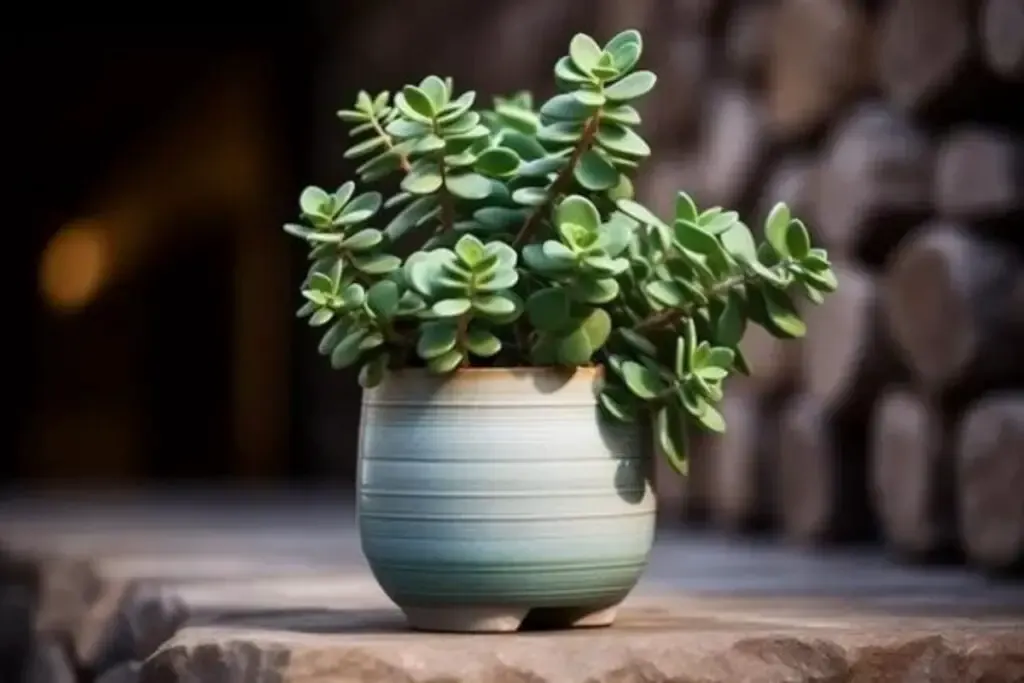
Growing jade plants in pots is an excellent way to enjoy these beautiful succulents indoors. Here are some tips to ensure success:
- Pot Selection: Choose a pot with drainage holes to prevent water accumulation.
- Soil: Use a well-draining cactus or succulent potting mix.
- Watering: Allow the soil to dry completely between waterings. Overwatering is a common mistake.
- Location: Place the pot in a bright spot with plenty of indirect sunlight.
Potted jade plants are versatile and adaptable, making them a fantastic choice for indoor gardening. With proper care, they can become a long-lasting and charming addition to your home.
Overwintering
Overwintering your jade plant is crucial, especially if you live in a cooler climate. Jade plants are not frost-hardy and need protection from cold temperatures.
Here’s how to overwinter them successfully:
- Bring Indoors: If your jade plant is outdoors, bring it inside before the first frost.
- Reduce Watering: During the winter, reduce watering as the plant’s growth slows down.
- Provide Light: Place your jade plant in a location where it can receive several hours of indirect sunlight.
- Avoid Temperature Shock: Keep it away from cold drafts and drastic temperature changes.
By providing a stable and appropriate environment during the colder months, you ensure your jade plant stays healthy and ready to thrive again in the spring.
Transplanting
Transplanting a jade plant can be necessary as it grows or to refresh its soil. Here’s a guide to transplanting effectively:
- Choose the Right Time: Early spring, just before the growing season begins, is the ideal time for transplanting.
- Select a Suitable Pot: Ensure the new pot is slightly larger than the current one and has good drainage.
- Prepare the Soil: Use a well-draining succulent mix for the new pot.
- Transplant Carefully: Gently remove the plant from its current pot, being careful not to damage the roots. Place it in the new pot and fill in with soil.
- Water Sparingly: After transplanting, water lightly to help the plant settle in its new home.
Transplanting provides your jade plant with fresh soil and more room to grow, contributing to its overall health and longevity.
Common Pests & Diseases
Jade plants are relatively resistant to pests and diseases, but they can occasionally be affected. Here are some common issues:
- Mealybugs: These small, white bugs can be treated by wiping them off with a cotton swab dipped in alcohol.
- Scale Insects: Appearing as small brown bumps on leaves and stems, these can also be removed with alcohol or neem oil.
- Root Rot: Often caused by overwatering, ensure proper drainage and allow soil to dry between waterings.
- Powdery Mildew: This white, powdery fungus can be prevented by ensuring good air circulation around the plant.
Regular inspection and prompt action at the first sign of trouble can keep your jade plant healthy and thriving. Remember, prevention is key, so maintaining proper care routines is essential in keeping pests and diseases at bay.

